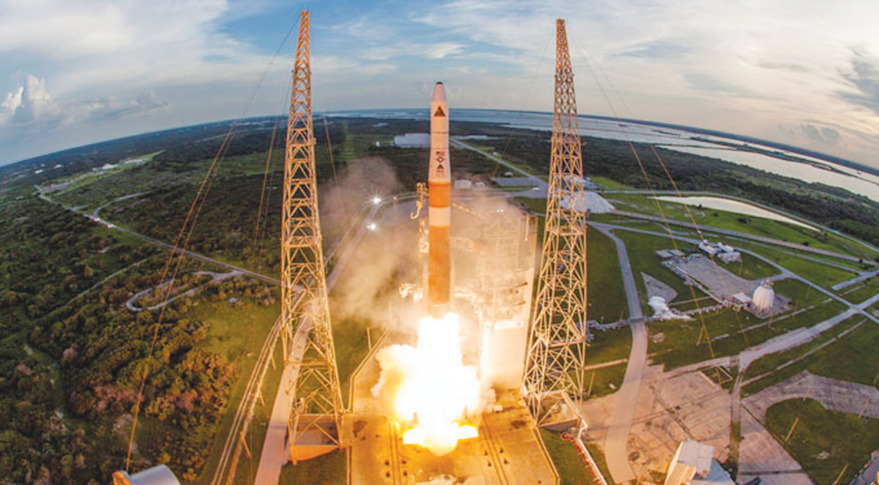Secretive ANGELS Satellite Part of New Air Force Space Experiments

COLORADO SPRINGS, Colorado – The U.S. Air Force is using a little-discussed satellite that launched in 2014 as part of ongoing experiments that look at how the Defense Department and intelligence community would act during a war in space.
Gen. John Hyten, the head of Air Force Space Command, said during a press briefing here that the Defense Department has used the Automated Navigation and Guidance Experiment for Local Space, or ANGELS, satellite during recent space experiments.
The satellite launched to geosynchronous orbit in July 2014 as part of the Air Force Space Command-4 mission, but Air Force leaders have rarely, if ever, discussed the satellite in public since then.
Hyten said during a press briefing here at the Space Symposium that the Air Force has "done a bunch of interesting things with the ANGELS experiment."
Those experiments have taken place at the Joint Space Operations Center at Vandenberg Air Force Base in California, the Defense Department's space operations nerve center, and at the newer Joint Interagency Combined Space Operations Center at Schriever Air Force Base here in Colorado Springs, which is a joint effort between the DOD and intelligence community, he said.
He did not elaborate further.
Managed by the Air Force Research Lab at Kirtland Air Force Base in New Mexico, the satellite is intended to test multiple techniques "for providing a clearer picture of the environment around our vital space elements,"according to an Air Force ANGELS fact sheet from 2014. The satellite aimed at improving methods for monitoring an increasingly contested space environment.
Get the Space.com Newsletter
Breaking space news, the latest updates on rocket launches, skywatching events and more!
The ANGELS satellite was expected to spend its first year after launch monitoring the used Delta 4 upper stage of its launch vehicle from about 50 kilometers away and then gradually move closer until it was eventually only a few kilometers away. That experiment was expected to last about one year.
The Orbital ATK-built satellite also includes high-performance accelerometers that could be used to examine ways to reduce the probability of on-orbit collisions, the Air Force fact sheet.
This story was provided by SpaceNews, dedicated to covering all aspects of the space industry.
Join our Space Forums to keep talking space on the latest missions, night sky and more! And if you have a news tip, correction or comment, let us know at: community@space.com.

Jeff Foust is a Senior Staff Writer at SpaceNews, a space industry news magazine and website, where he writes about space policy, commercial spaceflight and other aerospace industry topics. Jeff has a Ph.D. in planetary sciences from the Massachusetts Institute of Technology and earned a bachelor's degree in geophysics and planetary science from the California Institute of Technology. You can see Jeff's latest projects by following him on Twitter.










